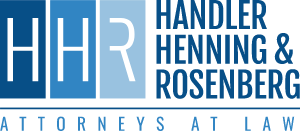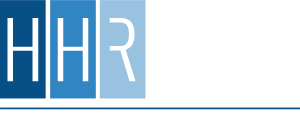There are different types of traffic accidents, and while many involve just one or two vehicles, those that involve three or more can present significant challenges when determining fault—and legal accountability. More than one person (or company) could share the blame for a multi-vehicle accident, and in Pennsylvania, the determination of fault may be decided based on traffic laws and whether the parties involved acted with reasonable care under the circumstances.
Multi-vehicle accidents, or pileups, are often associated with severe weather like heavy fog, rain, snow, and ice. In March 2022, a sudden snow squall led to a massive pileup on Interstate 81 in Mercer County, Pennsylvania. 6 people lost their lives in a crash that ultimately involved 41 passenger vehicles and 39 commercial vehicles. In February 2021, a pileup on Interstate 35 in Fort Worth, Texas, claimed 3 lives and left dozens of others injured. 133 vehicles were involved in the collision, which occurred after freezing temperatures and light rain caused black ice on the roadway.
Although weather or roadway hazards can play a part in increasing the risk of a collision, there is often some level of negligence or carelessness involved.
Upon investigating the Fort Worth pileup, the National Transportation Safety Board (NTSB) found that the company responsible for maintaining Interstate 35 had failed to properly prepare the road. Speeding was determined as another cause of the disaster. The cause of the Pennsylvania pileup is still under investigation, although speeding and the squall’s abrupt arrival are considered potential factors.
The Unique Challenge of Multi-Vehicle Accidents
If you have been involved in a multi-vehicle accident, even if it was not of the magnitude of the Mercer County and Fort Worth incidents, you may be facing a challenging road to recovery. Multi-vehicle accidents are among the most complex traffic collision cases our firm handles. Numerous contributing factors may be involved, and we must determine—and prove—which factor was most prevalent. We must determine all potential sources of fault and compensation to pursue the best result for our client.
Unlike accidents involving one or two vehicles, multi-vehicle collisions present a labyrinth of interactions, where each action and reaction can potentially alter the outcome. The primary challenge lies in deciphering this chain of events to establish fault. In Pennsylvania, the process is governed by a combination of state traffic laws and principles of negligence.
Pennsylvania’s Comparative Negligence System
Pennsylvania operates under a "comparative negligence" system. This means that in an accident involving multiple vehicles, each driver may hold a percentage of the fault. The key is determining each party's degree of negligence and how it contributed to the accident. For instance, Driver A might be found 40% at fault, while Driver B could be 60% responsible.
The same principle applies if a party other than one of the drivers is partially to blame. In the Fort Worth pileup, for example, the NTSB found that the roads had not been properly prepared for the weather. The same may apply if a vehicle manufacturer was to blame for a defective part that caused or contributed to a multi-vehicle accident.
Investigating Multi-Vehicle Collisions
When investigating a multi-vehicle collision, we may work with accident reconstruction specialists, investigators, and experts in various fields to determine the sequence of events that led to the initial collision, and (as is the case in certain collisions involving three or more vehicles) any subsequent crashes.
The following will be integral to an investigation:
- Police Reports and Witness Statements: The initial investigation typically revolves around police reports and witness accounts. These provide a foundational understanding of the accident.
- Physical Evidence: Skid marks, vehicle damage, and other on-site evidence offer critical insights into the dynamics of the crash.
- Expert Analysis: Often, accident reconstruction experts are brought in to piece together the sequence of events. Demonstrating the sequence of events leading to an accident can offer a clear picture of its primary cause and contributing factors.
- Surveillance and Dashcam Footage: Video evidence is playing an increasingly pivotal role in establishing fault in all traffic accidents, including multi-vehicle collisions.
Each driver’s insurance company will conduct its own assessment. However, insurance companies are known for attempting to minimize their financial exposure, leading to disputes over liability and compensation.
Talk to a Skilled Auto Accident Lawyer
Given the complexity of multi-vehicle accidents, having experienced legal representation is crucial. An attorney experienced with cases of this nature can help you navigate your case, gather and analyze evidence, negotiate with the insurance companies involved, and pursue the fair compensation you deserve.
At Handler, Henning & Rosenberg LLC, with a 100-year history practicing in Pennsylvania, we are adept at navigating these complexities. If you find yourself in the unfortunate situation of a multi-vehicle accident, don’t hesitate to seek professional legal assistance to safeguard your rights and interests. Our car accident attorneys stand ready to offer experienced guidance and representation in these challenging situations, upholding our long-standing commitment to justice for the injured and wronged. Call (888) 498-3023 today!


